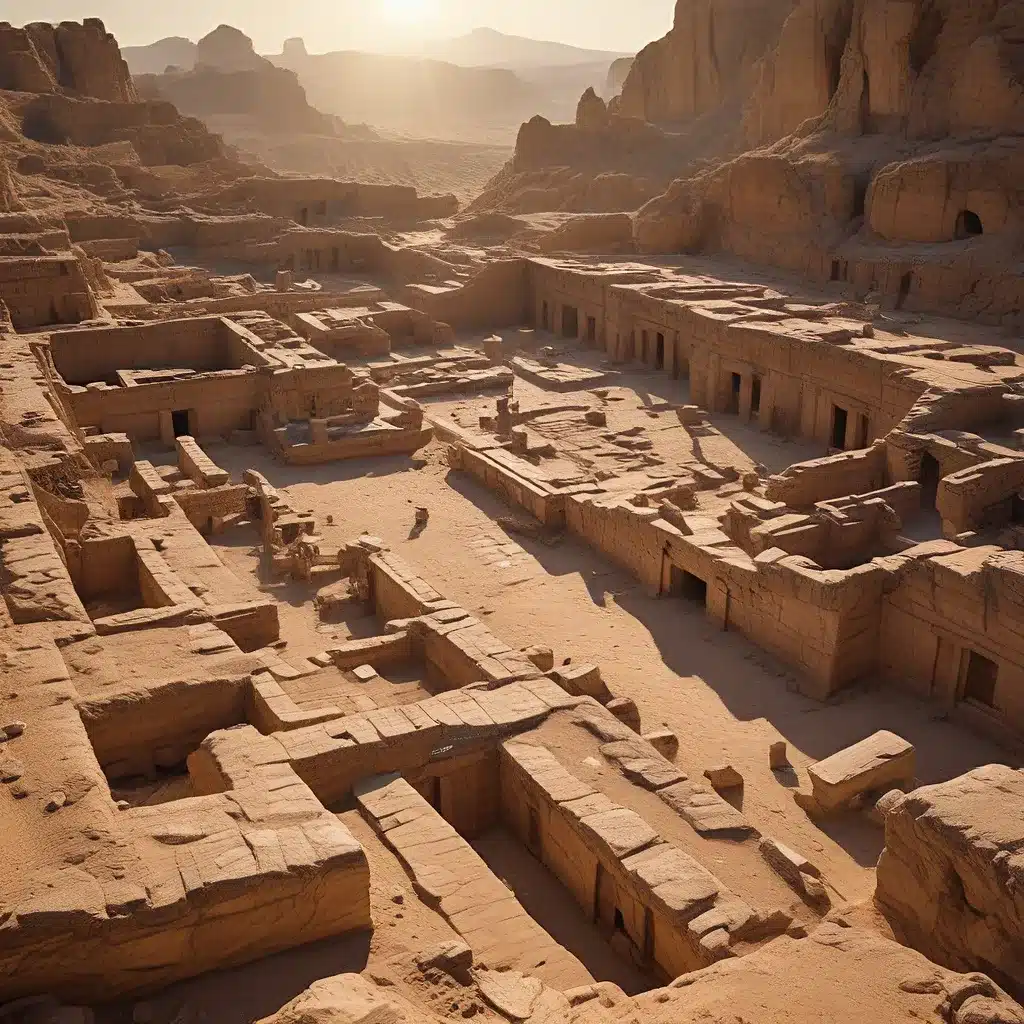
The Transformative Power of 3D Modeling in Archaeological Research
In the ever-evolving realm of archaeology, the emergence of 3D modeling has revolutionized the way we approach and understand the ancient world. Once relegated to the realm of mere “technological endeavors,” these digital reconstructions have now become essential tools in the arsenal of archaeological scholarship, shedding light on the mysteries of long-forgotten civilizations.
One of the pioneering figures in this field is Ethan Gruber, an American Numismatic Society scholar who has dedicated his career to exploring the potential of 3D modeling in Mediterranean and European archaeology. Through his work, Gruber has demonstrated the remarkable insights that can be gleaned from these digital simulations, challenging the traditional reliance on two-dimensional plans and opening up new avenues for scholarly investigation.
Illuminating the House of the Faun: A Case Study in Sight Lines and Sunlight
Gruber’s first foray into the world of 3D modeling was a serendipitous one, centered on the iconic House of the Faun in Pompeii. Tasked with a graduate seminar to test hypothetical sight lines within a typical Italian atrium house, Gruber found himself captivated by the potential of 3D reconstructions to reveal the nuances of ancient architectural design.
Through his meticulous modeling, Gruber made a startling discovery: the standard reconstructions of the House of the Faun suggested that it was “basically impossible to see the exedra from the street” – a finding that challenged the long-held assumptions about the social hierarchy and visual hierarchy inherent in Roman architecture.
But Gruber’s exploration did not stop there. By incorporating a Maya script developed by a TU Delft lecturer, he was able to accurately simulate the sunlight angles and shadows within the House of the Faun, revealing the dramatic changes in lighting conditions throughout the year. This innovative approach allowed Gruber and his colleague, John Dobbins, to unveil a new interpretation of the architectural renovations that transformed the space, ultimately leading to a revised understanding of the house’s history.
Unraveling the Mysteries of the House of the Drinking Contest
Gruber’s journey with 3D modeling did not end with the House of the Faun. In 2009, he turned his attention to the House of the Drinking Contest, a late Severan period house in the port city of Antioch, also known as Seleucia Pieria. Here, Gruber had two primary objectives: to test John Dobbins’ sight line hypothesis and to recontextualize the elaborate mosaics within the house by applying the same lighting simulation methodology.
Through his digital reconstruction, Gruber was able to confirm Dobbins’ hypothesis that the irregular intercolumniations within the colonnade bordering the north side of the courtyard allowed for direct views from rooms on the north side to the south. But the true revelation came when Gruber incorporated a georeferenced photograph from the 1930s, allowing him to simulate the breathtaking view of the Mediterranean Sea and Mount Casius beyond.
Gruber’s work on the House of the Drinking Contest also saw him delving deeper into the technological and theoretical aspects of lighting simulations, drawing inspiration from the groundbreaking research of Simon Ellis, who had pioneered the use of 3D models in archaeological scholarship. Gruber’s findings, like those of Ellis, suggested that the setting sun in the spring and summer months would have illuminated the grand central mosaic in the triclinium, creating a visually stunning experience for the ancient inhabitants during their symposia.
Unraveling the Mysteries of the Temple of Artemis at Ephesus
Gruber’s exploration of the potential of 3D modeling did not stop at the domestic architecture of Pompeii and Antioch. In a graduate seminar on Anatolian archaeology, he turned his attention to the Temple of Artemis at Ephesus, testing a hypothesis proposed by Anton Bammer regarding the epiphany of Artemis from within the temple.
While Bammer’s theory may have held true for the Archaic temple built by Croesus in 550 BC, Gruber’s 3D reconstruction and sunlight simulation revealed that it would not have been possible in the 4th century temple based on archaeological measurements. However, Gruber’s work did uncover another intriguing possibility – the interaction between the temple and the surrounding topography, specifically the mountain Panayirdağ to the southwest.
By incorporating high-resolution Digital Elevation Model data provided by the Austrian Archaeological Institute, Gruber was able to observe how the shadows cast by the mountain fell upon the temple during the waning hours of the winter solstice. This finding suggested that the architects of the temple may not have considered the sun’s effect on the structure in the same deliberate manner as those who designed the Augustan monuments in the Campus Martius, as explored by Bernie Frischer and John Fillwalk.
The Enduring Impact of 3D Modeling in Archaeological Scholarship
The work of Ethan Gruber and his colleagues has demonstrated the transformative power of 3D modeling in the field of archaeology. These digital reconstructions have enabled scholars to test hypotheses, observe environmental conditions, and recontextualize artifacts in ways that were previously impossible, shedding new light on the complexities of ancient civilizations.
As Gruber aptly notes, these simulations are not absolute truth, but rather potential explanations of the past. The flexibility of 3D models allows researchers to address alternative scenarios and incorporate new evidence, constantly refining our understanding of the ancient world.
The impact of these technologies extends far beyond the confines of academic discourse. By bringing the shadows of the ancient past to life, 3D modeling has the potential to captivate and educate a broader audience, sparking a renewed interest in the rich tapestry of human history. As we continue to unravel the mysteries of the past, the insights gleaned from these digital reconstructions will undoubtedly shape the future of archaeological scholarship and our collective understanding of the world that came before us.


